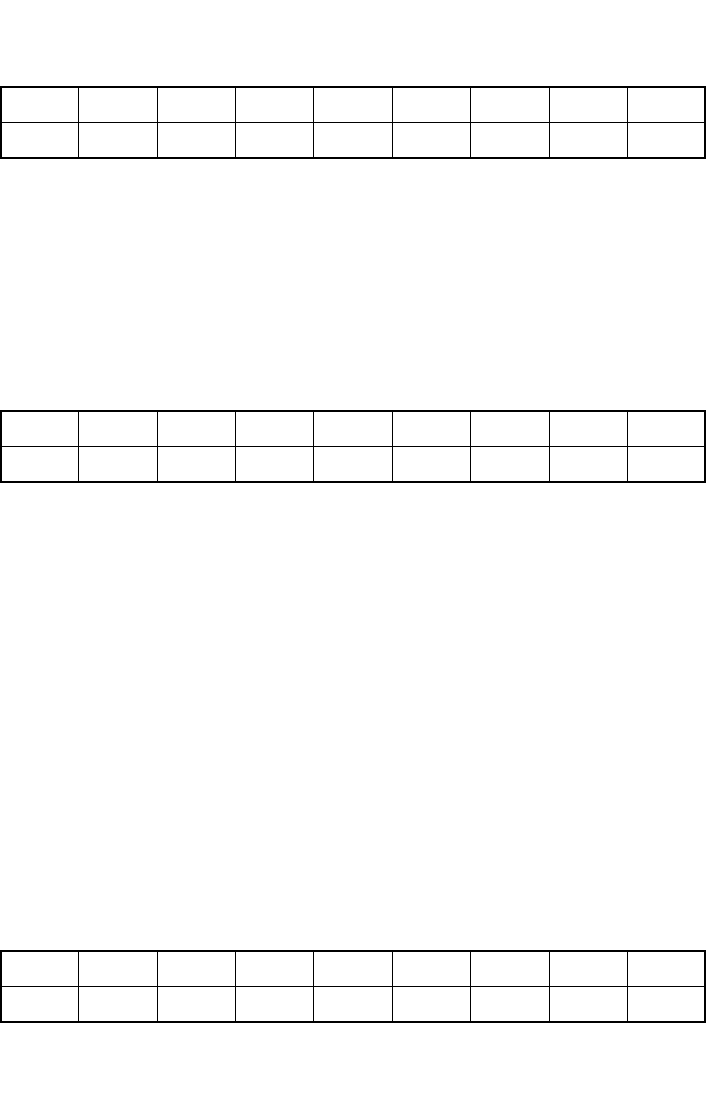
CT255 • 11
128 times to get the most significant LED to change state just once.
Normally an 8 bit number has these significant values:
Say bits 7, 3, and 0 are on, all others are off. The value would then be 128 + 8
+ 1 or 137.
Say instead bits 6, 5, 4 and 1 are on, all others are off. Our value would then
be 64 + 32 + 16 + 2 or 114.
Our display is set up to read from 0.0 degrees to 127.5 degrees in 1/2 degree
steps. What we do is stick in an imaginary decimal point to the left of the LSB
(least significant bit) and then divide all the numbers by 2.
Say instead bits 6, 5, 4 and 1 are on, all others are off. Our value would then
be 32 + 16 + 8 + 1 or 57, which is 1/2 of 114.0. This means that we have a
temperature reading of 57 degrees!
Now since we have used 8 bits for our counter, this is considered a single byte
of data. This value, with the decimal point in place, is now called a fixed-point
number. This means that the decimal point can never move, even when we
perform mathematical operations on it. This number is now considered a 7.1
format fixed point binary value, meaning there are seven binary digits to the
left, one to the right of the decimal point.
You may have heard of fixed-point DSPs; these use the same principle, only a
lot more bits, and the values never surpass 1 or –1 since they shift the
decimal point all the way to the left of the MSB. If there were such a thing as
an 8-bit fixed point DSP, the bit values would be as follows:
Essentially take our number from before and divide by 256, or 144/256 =
0.445. DSPs do this to prevent math from overflowing in value as you multiply
and accumulate. DSPs handle this math very quickly.
Bit #: 7 6 5 4 3 2 1 0
Value: 128/2 64/2 32/2 16/2 8/2 4/2 2/2 1/2
Bit #: 7 6 5 4 3 2 1 0
Value: 128/256 26/256 32/256 16/256 8/256 4/256 2/256 1/256
Bit #: 7 6 5 4 3 2 1 0
Value: 128 64 32 16 8 4 2 1


















